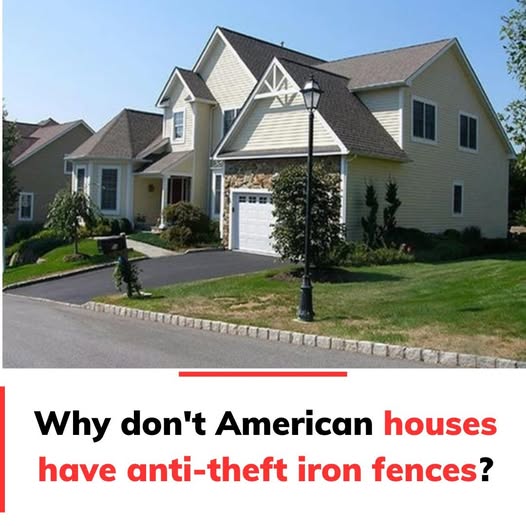ADVERTISEMENT
For Complete Cooking STEPS Please Head On Over To Next Page Or Open button (>) and don’t forget to SHARE with your Facebook friends
In contrast, other types of fencing—such as wooden, chain link, or vinyl—tend to be more affordable and easier to maintain. In an era when homeowners often seek ways to cut down on costs, opting for a more affordable and low-maintenance fence makes more financial sense for many people.
5. The Perception of Crime in the U.S.
The perception of crime plays a role in the decision to invest in security measures. While theft and break-ins are a concern for many Americans, the perception that the neighborhood is safe may influence homeowners to forgo installing iron fences. American suburbs, in particular, often have lower crime rates than urban areas, and many people in these regions feel comfortable with less defensive home structures.
In contrast, in countries with higher crime rates or areas where burglaries are more common, iron fences are more of a necessity. There’s a stronger association between visible physical barriers and security in these regions.
6. Alternatives to Iron Fences for Security
In the U.S., alternative security measures are often preferred over traditional physical barriers like iron fences. Here are some options that many American homeowners rely on:
- Security Cameras: Visible security cameras can act as a strong deterrent to potential burglars. Many homeowners install these devices around the perimeter of their homes and monitor them remotely via smartphones.
- Alarm Systems: Many homes are equipped with monitored alarm systems that alert authorities when a break-in occurs. These can often provide faster responses than a physical barrier.
- Motion-Sensing Lights: Bright lights triggered by movement are often installed around the perimeter of properties. They can surprise intruders and alert homeowners to suspicious activity.
- Landscaping: Strategic landscaping—such as thorny bushes or hedges—can also help deter criminals by making it harder to access windows or doors.
7. A Shift Toward Community Safety
In many parts of the U.S., there is a greater emphasis on neighborhood watches and community engagement when it comes to security. Instead of relying on physical barriers like iron fences, many American neighborhoods focus on building a sense of community and communication to prevent crime. Programs like neighborhood watch groups, where residents keep an eye out for each other, are common in suburban areas.
This focus on social cooperation and vigilance is often seen as a more effective and less isolating alternative to erecting large physical security measures.
Conclusion
While iron fences may be a staple of home security in other parts of the world, the reasons they are not commonly seen in American homes are deeply rooted in cultural preferences, legal factors, economic considerations, and technological advancements. For many U.S. homeowners, the combination of high-tech security solutions, affordable alternatives, and a preference for open, inviting spaces makes iron fences unnecessary. Instead, other measures—whether technological or community-based—are often considered sufficient for keeping homes safe and secure.
